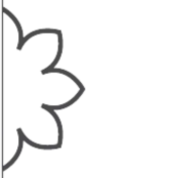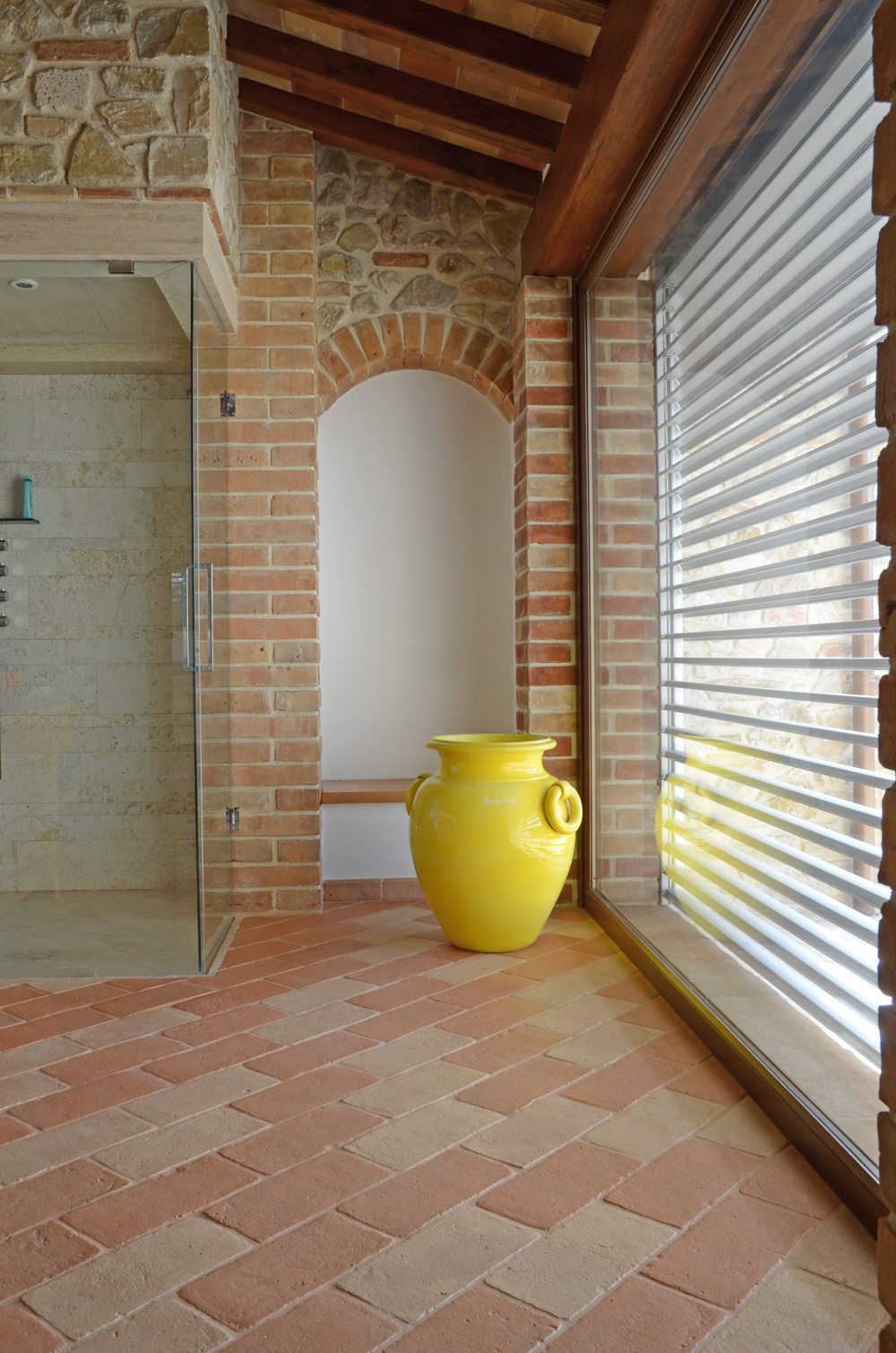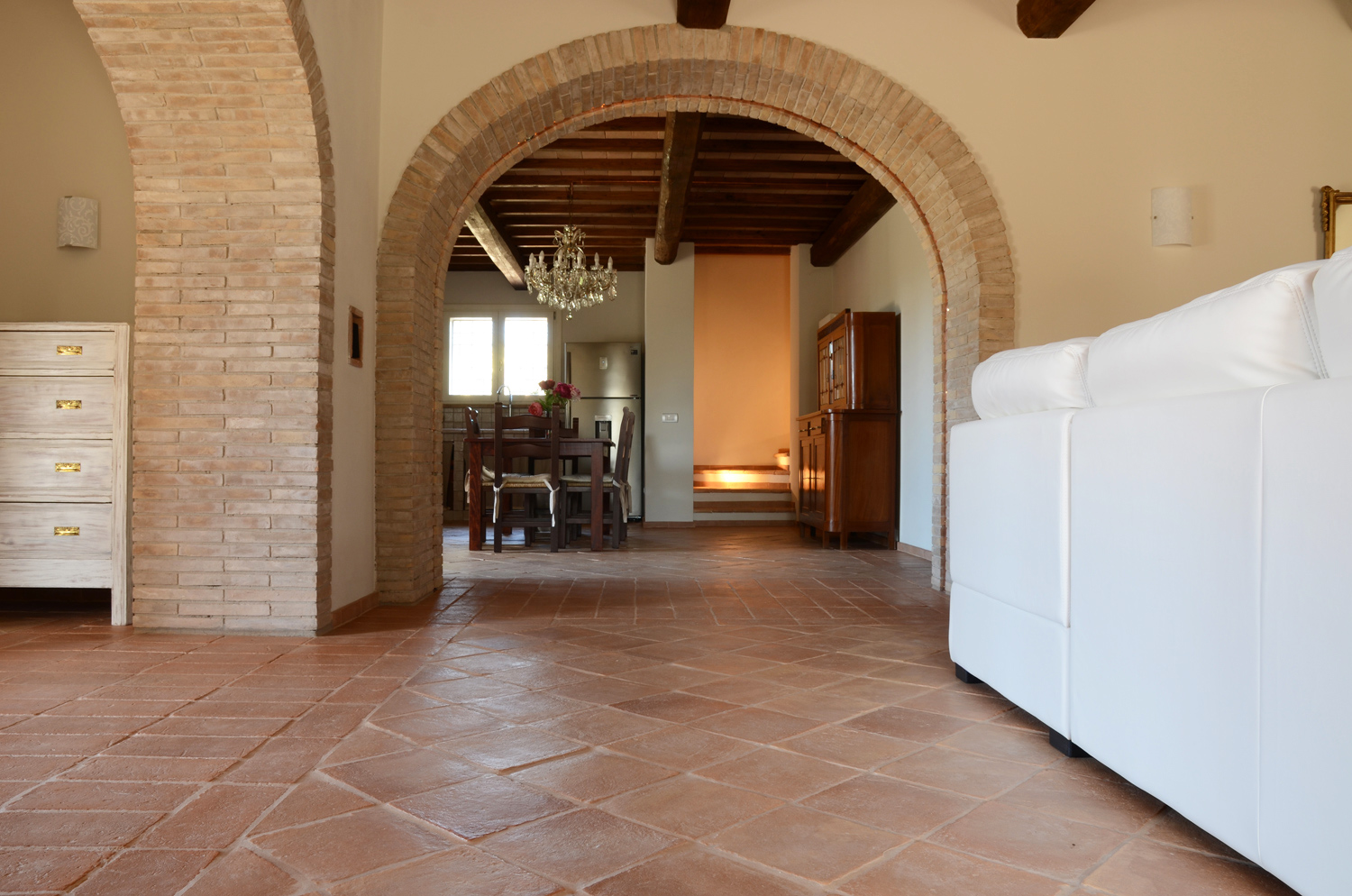The arch is probably the structural element that, above all, has defied the millennia. In our imagination, the arch is a semicircular element built on two supports with the ability to bear the weight above it.
The first arch was made of two opposing slanted beams. Later, the beams were placed vertically, and above them, a lintel was added. Issues related to the fragility and structural limitations of these elements in certain situations gradually favored the arch structure as we recognize it today. By inserting wedge-shaped elements from one support to another, the vertical forces on the span of the arch are nullified and distributed across the shoulders and sides (thrust structure). This characteristic allowed for the creation of monumental structures that have withstood the test of time and have reached us today.
Brick Arches through-out Time
First the Etruscans, then the Romans, built arches known as ‘full round‘ and ‘flattened arches.’ Later, throughout Europe, the predominant arch became the ‘pointed arch,’ but if we cross national borders, arches took on different forms based on the cultures they encountered (such as the ‘horseshoe’ arch, the ogival arch, and the multi-lobed arch). In Spain, in the 20th century, the arch was reinvented and used beyond imagination by Antoni Gaudí, who developed mathematical models to create parabolic and hyperbolic arches.
In architecture, the arch, the quintessential structural element, thus becomes an aesthetic element that represents the architectural style of a region or civilization.
Terracotta Brick Arches
The arch, regardless of its shape, requires important lateral supports (piers) to counteract the oblique thrust (resulting from the combination of vertical and horizontal forces). Generally, masonry pillars, columns, or a succession of other arches are used to nullify or at least oppose this thrust.
The materials used to construct arches vary from wood, to stone, bricks, iron, and concrete. Terracotta bricks have always been the most versatile material in arch construction. The greatest difficulty has always been the cutting of stone; with terracotta, however, the construction can be done using traditional bricks or bricks made in the shape of wedges.
Although an arch can also be built dry with perfectly adjacent wedge-shaped bricks, the binding material traditionally used is cement mortar. This forms the joint and, in the case of regular bricks, also serves as the wedge.
It is interesting how brick arches still find a place in new projects, restorations, and renovations. Often, by removing the plaster, these structures are discovered and then refurbished through sandblasting. In new construction, brick arches are used to highlight the transition between different spaces or to enhance outdoor areas, creating large porches and verandas.
In newly built reinforced concrete buildings, arches are often inserted both inside and outside, despite this construction type being structural in itself. The arches are cladded in bricks using strips and L-shaped solutions to emphasize their shape, enriching the aesthetic value of the building by reproducing the ‘face-view brick’ effect.
Fornace Bernasconi produces solid terracotta bricks for the construction of both load-bearing brick arches and slats or L-shaped bricks for decorative cladding (aesthetic function). The artisanal and made-to-order production ensures the creation of custom bricks with dimensions, thicknesses, and formats that can adapt to and satisfy any aesthetic and structural need.


